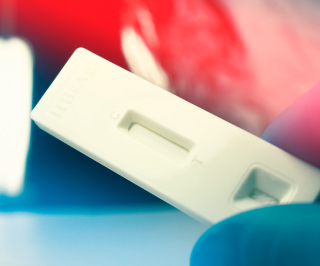
Image credit: CIPhotos/iStock/Thinkstock
Rapid diagnostic tests (RDTs) are crucial to saving lives in underserved nations, yet they rank low as a global priority, and a number of financial, regulatory, and clinical barriers are hampering their development.
The U.K.-based Academy of Medical Sciences (AMS) and the InterAcademy Partnership for Health in South Africa arrived at these conclusions during an international workshop in November 2016. AMS hosted this 1-day event to analyze and address the roadblocks that impede RDT development and deployment.
In a report that summarizes their findings, the policymakers outlined a strategy for boosting the profile of RDTs and accelerating their adoption through improved information sharing and better coordination among nations.
“We need diagnostics to move into the spotlight, taking their rightful place as a priority alongside drugs and vaccines to improve global health. Governments around the world will need to prioritize development and implementation of rapid diagnostics, while a new international body is needed to help coordinate global efforts,” said the meeting’s chair, Sanjeev Krishna, FMedSci, in a statement.
RDTs serve many purposes, including enabling physicians to diagnose diseases rapidly, thereby prescribing appropriate antimicrobials and other medications. “Rapid diagnostic tests are also essential for tackling major healthcare challenges, such as controlling emerging diseases and reducing antibiotic resistance,” Krishna said.
Despite these benefits, RDTs face a number of barriers, namely that they’re not getting the attention they deserve in areas where they’re needed the most: low- and middle-income countries (LMICs). Commercially speaking, RDTs are challenging to develop because they have to be robust and economical enough to weather difficult environmental conditions and be accessible to remote populations, all of which make them unattractive to major diagnostics companies.
At the same time, smaller companies might not have the financial backing to build up and sustain an RDT business, according to the report. Not only that, but diagnostic developers in LMICs have to deal with variations in the approvals processes and regulatory environments among different countries.
“In some LMICs, regulatory processes may be weak or absent entirely, leading to the use of poor-quality or unvalidated tests and discouraging investment in the development of high-quality tools. Complex approvals processes, variation between countries, and a desire for country-specific data are all major challenges to diagnostics developers,” according to a summary of the report.
Another barrier is that devices in the existing RDT market don’t always meet manufacturer performance claims and are limited in that they only focus on individual pathogens. The drawback of this is that a clinician may see a negative result and not know what’s actually causing a patient’s symptoms.
“The long-term reliability of rapid diagnostic tests is dependent on effective national quality assurance systems, which are lacking in many LMICs,” the authors observed.
Policymakers at the meeting agreed that no one “silver bullet” diagnostic technology would be suitable for use across all healthcare applications. Instead, they suggested a multipronged strategy that would incorporate a variety of tools for specific purposes.
To help raise the profile of RDTs, the report’s authors called for the creation of an “essential diagnostics list” for transmissible infections such as Ebola virus or SARS-CoV, and an international organization to coordinate activities surrounding advocacy, resources, and expertise.
In other recommendations, the report’s authors called for the creation of “market pull” mechanisms to attract diagnostic developers to LMICs. Technology transfer and development of local manufacturing capabilities could in turn reduce production costs.
Instead of focusing solely on test performance to guide policy, regulators should place a higher priority on patient pathways and outcomes. “Strengthened national regulatory systems are required to encourage the development of high-quality tests, with more focus on international standards and consistency in approach between countries,” the authors suggested. Streamlining regulatory approvals and minimizing requirements for country-specific data sets call for better cooperation among regions in LMICs.
LMICs need more flexible, upgradable tools that support disease surveillance and simple and inexpensive diagnostics to identify noncommunicable diseases. Another application in LMICs that deserves attention, particularly in the area of surveillance, is next-generation sequencing and disruptive technology. “Its potential use in LMICs should be closely monitored and assessed,” the authors recommended.